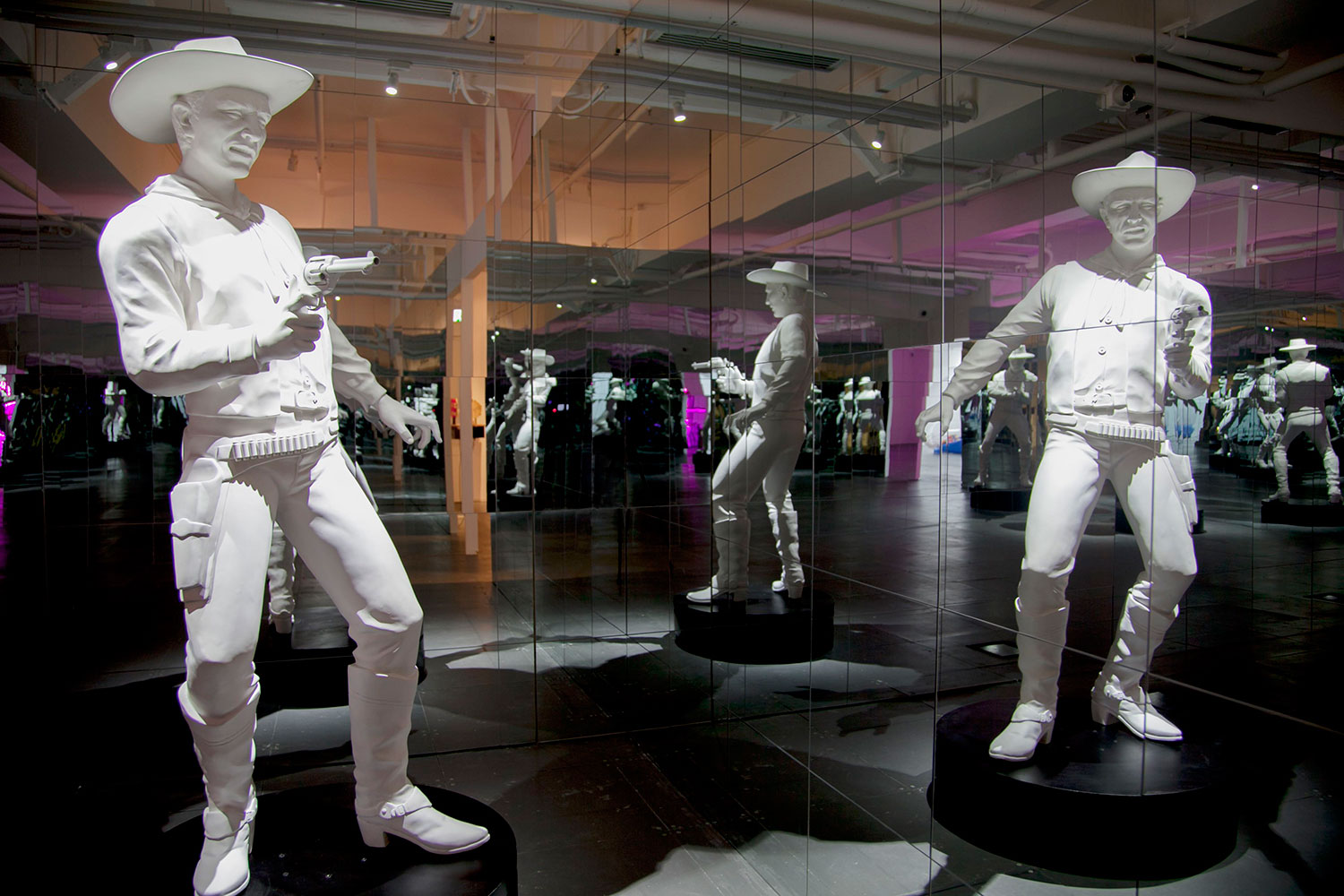Shows
Visit the Wild Hong Kong in “Reversal Ritual”


During the Middle Ages, carnivals were smashingly weird. They would last for multiple weeks, stretching from Christmas to Lent. Before the arrival of Ash Wednesday, which marked the beginning of six weeks of penance and self-denial, townsfolk would partake in all manner of gluttony and hedonism. Pigs were put on mock trials, branded as devils, then executed (and consumed). Sexual desires would be indulged, sometimes publicly. Celebrations—if they could be called that—would be without abandon, wild, debaucherous. There was nothing normal about these annual bashes. Tapping into the concept of “carnivalesque,” as coined by literary critic Mikhail Bakhtin, De Sarthe Gallery mounted “Reversal Ritual” as the first exhibition in its new Hong Kong space, located in the southern district of Wong Chuk Hang, after having been based in Central since 2010. The exhibition presents five emerging Chinese and Hong Kong artists who created works that are playful, acerbic, or even absurd, to make sense of their places in the sociopolitical and cultural structures of our time.
Have you ever watched yourself during the mundane moments of your daily routine? Mak Ying Tung, who is half of the artist duo Come Inside, delivered the opportunity. You Better Watch Out (2017) is a giant snow globe containing red, green, blue, pink, yellow and orange sponge balls, as well as a QR code printed on colored paper. A blower connected to the plastic, see-through orb drives the balls’ rolling, like stunt motorcyclists in spherical metal cages. Two sheets with the QR code sit within our reach, and a scan by visitors shows live security camera footage of the installation in De Sarthe Gallery, including the viewer himself.
Passive observance gives way to active participation in Mak’s next design, Sound of Music (2017). The artist borrowed the tunes of three Cantopop songs and one Christmas song and built a karaoke stage, complete with gold drapes, a rope light, disco ball and live microphones. The songs’ lyrics have been changed to lines such as, “Gallery / Who doesn’t like galleries? / It’s a nice place where you can get free drinks,” skewering the role of commercial art spaces in the art world. Viewers are meant to abandon that role and become performers, and hence turn into part of Mak’s art, yet they are not meant to drive the performance as captioned lyrics guide their every word as the performance unfolds.


The prismatic light show that accompanies Mak’s karaoke stage is joined by the neon pink glow of Wang Xin’s Artists Can Tell (2016). The premise is simple: Xin constructed a bar that serves one drink—a bottled cocktail of vodka and Kool Aid for the price of HKD 100 (USD 13). Wang allows artists other than herself to play the role of bartender; they serve drinks to patrons, handing over bottles that are labeled with fragmented phrases—“International Art English Everywhere,” “Gossip in the Art World,” “Where Artists Get Their Ideas,” “How to Pitch a Story,” and more. As the relationship between artist and gallery-goer mutates into barkeep and bar-goer, the banter may traipse from serious discussions about art to wherever the conversation lands. All the while, we are literally drinking the Kool Aid thrusted on us by a stranger. However, we are complicit in this Lynchian spectacle; after all, we paid for our own poison.
Peeling off the barstool, perhaps just a tad addled, one finds three videos by Liang Ban around the corner. A 29-second video, Fitting Room (2016), plays on an iPod. In it, Liang sports underwear that resembles the German and Italian flags. Groovy lounge music plays as the artist changes from one set of boxers to the other. By doing so, the artist prompts us to weigh whether identity can be swapped just as easily, echoing his own rejection of being labeled a “Chinese artist” in a borderless art world. As we slip into new identities, just as the artist slips into new garments, are we literally turncoats? We see Liang again in Model (2014), this time posing for sculpture students. The artist is only wearing a pair of white briefs, and is posing in the same manner as Ronald Reagan did in May 1940 for a class of art students at the University of Southern California, as an example of the ideal male physique. Like Reagan, Liang holds an American football; in the last few seconds of the three-minute video, Liang throws the ball, shattering the classroom’s window and our train of thought.


Take a few more steps to find Tong Kunniao’s When You Do it, Leave Some of the Pig Ass (2015), with motion-activated setups of silicon pigtails rotating to strike stationary tambourines. Think of it as an automated, grotesque performance that needs no live actor, only an audience of one, like coin-operated amusements.
Xin Yunpeng’s 20140128 (2014) in a room of mirrors rounds out the show, featuring two statues of cowboys, guns drawn with hammers cocked, mounted on slowly spinning plinths. With infinite reflections receding deep into the mirrored walls, there will always be a gun barrel (or two, or more) aimed at the viewer, no matter where he stands. In one corner of the room, a lusty pink glow billows in, perhaps paired with whispery art world gossip or confident karaoke croons; in another, the sounds of tambourines and quiet motors follow as shoe rubber scrapes the gallery floor. Every three minutes, a window shatters. This sums up the carnivalesque experience proffered by “Reversal Ritual,” with all its lights, a camera and plenty of action.
“Reversal Ritual” can be viewed at De Sarthe Gallery, Hong Kong, until May 13, 2017.







